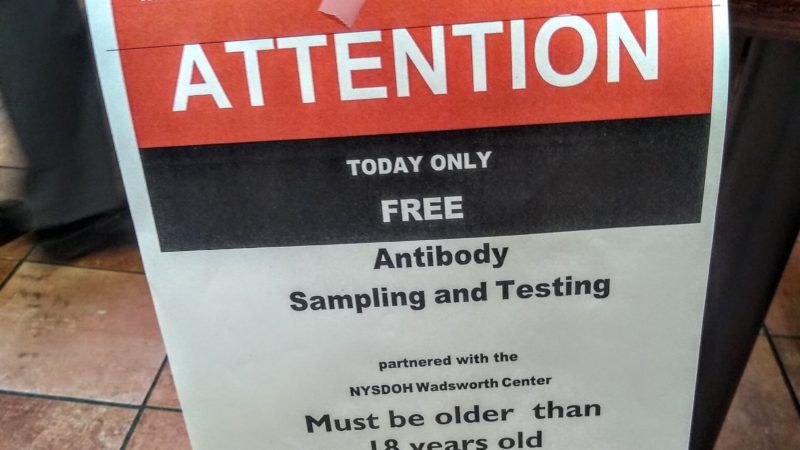California Coronavirus Antibody Studies Likely Wrong That 12.4 Million of New York City's 8.4 Million Residents Have Already Been Infected With the Virus
California and New York coronavirus infection rate estimates differ substantially.

How many Americans have already been infected with the novel coronavirus that causes COVID-19? Answering that question would give public health officials and the rest of us a much better idea of how dangerous the illness is. That information would enable accurate calculations of what percentage of infected people die of the disease, that is, the infection fatality rate.
Right now there are nearly 900,000 confirmed cases in the U.S., but researchers know that potentially a very high percentage of people who have been infected have experienced mild or even symptomless versions of the disease are undetected by the health care system. The best way to figure out the actual percentage of Americans who have already encountered the disease is to do random population screening using antibody blood tests. Three months into the pandemic, the Centers for Disease Control and Prevention (CDC) has yet to fully implement this sort of population screening.
In the absence of widespread testing by the CDC, privately funded researchers associated with Stanford and the University of Southern California earlier this month released the results of two controversial studies in which they tested the blood of residents of Los Angeles and Santa Clara (Silicon Valley) counties for antibodies to the virus. Applying various statistical and demographic adjustments, the California researchers estimated in Santa Clara County that the actual number of residents already infected by early April ranged between 48,000 and 81,000, which would be 50 to 85 times more than the number of confirmed cases. For Los Angeles County they calculated that approximately 221,000 to 442,000 residents have had the infection, which is 28 to 55 times higher than the tally of confirmed cases at the time of the study. If their calculations are right, that would mean that the disease has spread undetected widely throughout the population and would thus be much less deadly than many other researchers had feared.
Applying the lowest (28) and the highest (85) undetected case ratios from the California studies to the 260,000 confirmed cases in New York state would imply that between 7.3 and 22.1 million of the Empire State's 19.5 million residents have already been infected. Applying those ratios to New York City's 146,000 confirmed cases would imply that between 4.1 and 12.4 million of the Big Apple's 8.4 million residents have been exposed to the disease (which, for the upper-end estimate, is obviously impossible).
Yesterday, New York Governor Andrew Cuomo revealed the results of antibody tests of randomly accosted 3,000 New Yorkers tested as they bought groceries and shopped at various locations across 19 counties in 40 localities. The tests suggested that 13.9 percent of New York state and 21.2 percent of New York City residents had been exposed to the virus. That would mean that 2.7 million and 1.8 million state and city residents respectively have been infected with the virus. Stephen Hawes, chair of the University of Washington's department of epidemiology, told the New York Times that he believed it was likely that New York's survey was overestimating the infection rate somewhat by targeting people moving around in society. Folks who are more circumspect about social distancing weren't tested.
Calculations using these New York state and city blood test data suggest that the rate of mild and symptomless coronavirus infections is only about ten to elevenfold greater than the number of confirmed cases in those jurisdictions. Assuming the New York blood test data are reasonably accurate would suggest that the California studies are overestimating undetected infection rates three to eightfold. If Hawes is correct that would mean that the California studies' undetected infection estimates are even less likely to be in the ballpark.
One upshot is that the California studies' relatively low estimates of the percent of infected people who eventually die of the disease—between 0.1 and 0.3 percent—are unfortunately too optimistic.
For more detail, see Jacob Sullum's excellent discussion of why California and New York fatality rates might differ.
Show Comments (126)